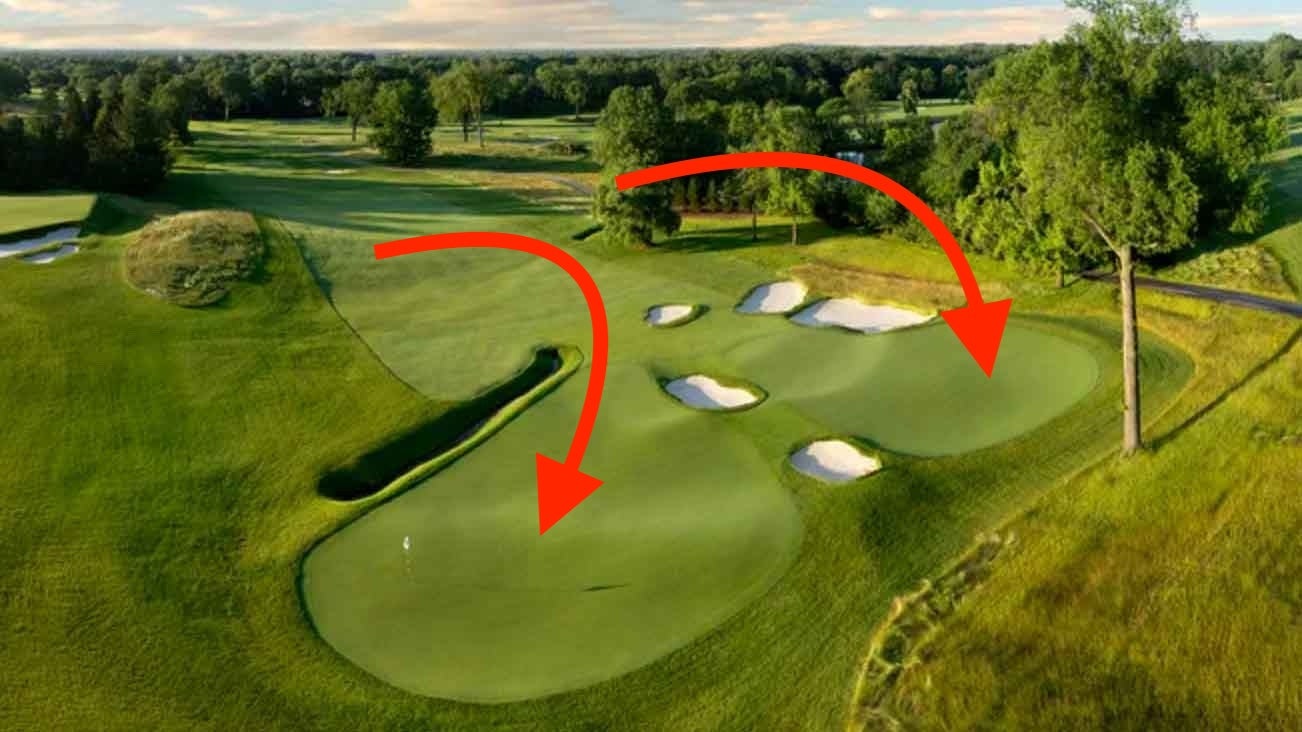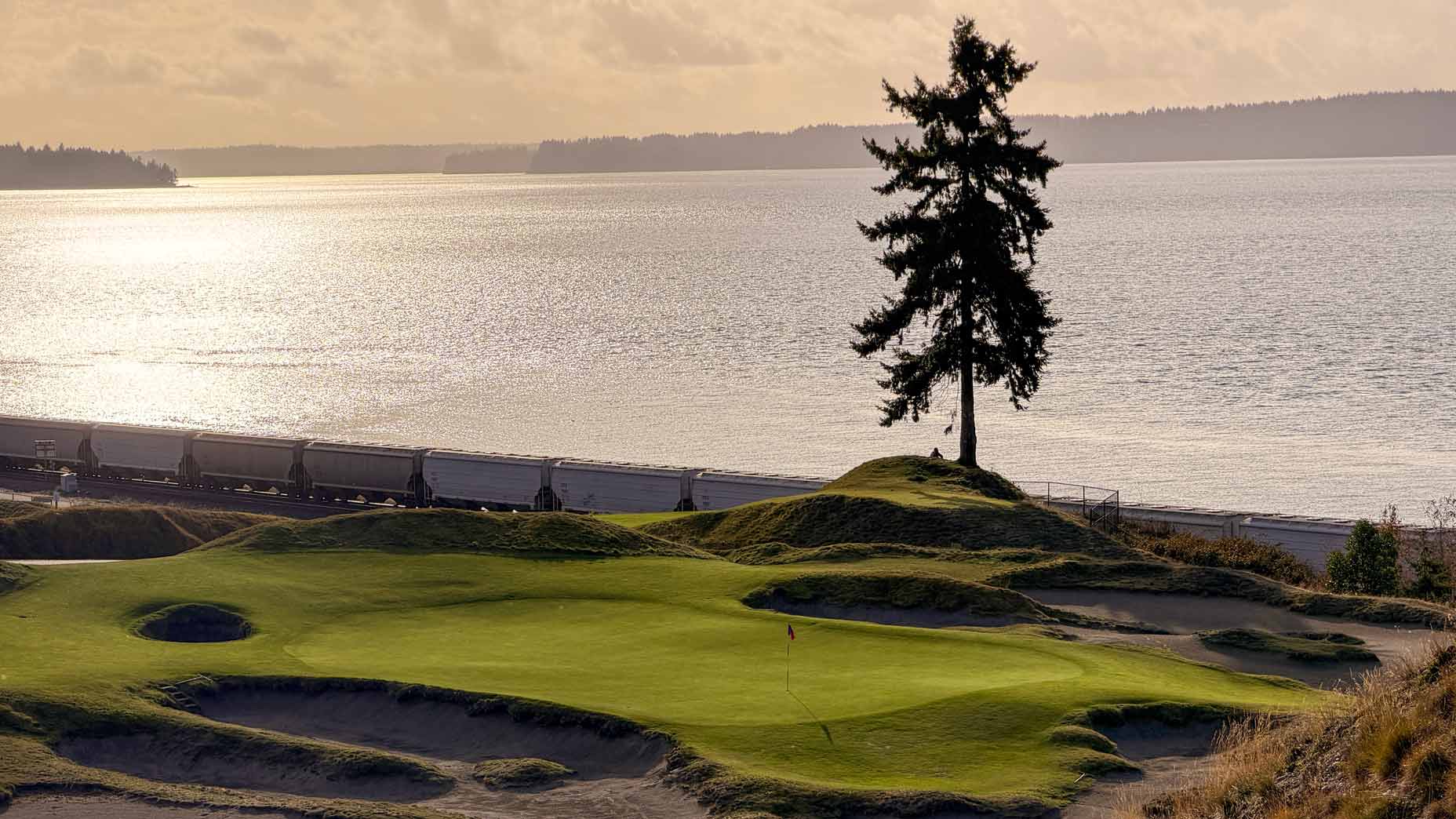 Our 7 favorite courses we played in 2025
Our 7 favorite courses we played in 2025
Is this the perfect par 4? A rough-free design that allows for a variety of recovery shots
Ed. note: The inaugural GOLF + Nicklaus Design Challenge, to which contestants submitted plans for their dream par 4s, attracted nearly 200 entrants. From that group, the experts at Nicklaus Design, along with a handful of GOLF editors and writers, nominated 10 finalists — and now we’ve recruited your help in picking the winner. (You can cast your vote here.) To give you more insight into the designers behind the designs and how they conjured their holes, we’re profiling each of them in more detail in the coming days. The winner — which will inspire a hole design on an upcoming Nicklaus Design course — will be announced on or before May 15.
Previous finalist spotlights: Todd Bramwell, Bryan Orellana
DESIGNER: TREVOR HANSEN
Age: 37
Residence: Providence, Utah
Occupation: Construction manager
Handicap: Used to be a 5 when I was in college, probably a 13-14 now because I don’t play as much as I want
Been playing golf for: Since I was old enough to comprehend how to hit a ball into a hole! Age 3 or 4 from what I have been told.
Favorite course you’ve played: Pacific Dunes
Course you’d most like to play that you haven’t: National Golf Links of America
Ever designed a golf hole before? I used to do it for a living, although I have never been an architect of record. For many years I was a design associate.
Time spent on your design? Three to four days mulling it over in my head, two days on paper.
WE WANT YOUR VOTE! Click here to pick the perfect par 4 from among our 10 finalists.

Please explain your creative process.
When creating a fantasy hole, I usually like to create an idea in my head and then adjust it as I go along. I like to sketch out views of how the hole looks on the ground to get a good idea of how I can make it work on plan view and make adjustments to the plan as it fits the sketches. With a fantasy hole, I figure this process is as comparable as one can be with how a golf course is actually built. My experience in the industry has taught me that a design is only just a guide and that all great holes and courses are ultimately design and built in the field, not on paper.
Courses that inspired my design are many of the recently built courses that took elements of the links courses in the British Isles and the Sandbelt courses of Australia. Tara Iti and Ohoopee Match Club are two that come to mind. They both have short-cut fairways wall to wall with almost no rough, and lots of unique and natural ground contours throughout.

ADVERTISEMENT
My design intention with this hole is to take a shorter hole and contrast that length with bold and intricate features of sand, slope and contours. I like golf holes that present player’s with options, and even more so with a shorter par 4. When first viewing my plan, it appears that the fairway is overly wide and one can just bang away. However, from the golfer’s perspective, the left half of the fairway would be hidden from view, as the tee shot is slightly uphill and a long diagonally oriented bunker/waste area runs down most of the left side. To break up the fairway itself, an intricate transition slope separates the left and right side. Sharp scallops, humps and hollows would be carved into this slope so that if anyone would land their ball in this area, that would lead to awkward lies and angles which would prove difficult for an approach into a green 10-18 feet above the fairway. Players need to make clear decisions as to where they place their tee balls, as that will not only affect their angles of approach but also the types of shots they wish to play into the green.
WE WANT YOUR VOTE! Click here to pick the perfect par 4 from among our 10 finalists.

I wanted the green complex to follow the same theme. The green surface itself is huge, more than 170 feet in width. To break up such a large green, I designed a uniquely shaped surface that would naturally break up the green into smaller sections. To reinforce these sections, I proposed various transitions and contours to create distinctive pinning areas. The right two-thirds of the green runs from right to left, where players can feed their ball off a broad slope/mound placed short right of the green. The left side of the green is broken into two tiers front and back. Both sections can really only be accessed with an aerial shot, but players can also feed their balls off the slope behind the green on the back section. If a players leave themselves on the wrong side of the green, getting down in two can be challenging.
I believe one of the most critical elements of my design is the use of short turf-grass cut wall to wall, especially widening it out around the green itself. This elevates the importance of the ground game on every shot. It truly brings all the features and hazards into play. It makes players think constantly. It allows for multiple strategies in recovery shots and rewards creativity in play. I personally prefer this aesthetic on a golf course as it creates in my opinion the most natural look a designer/builder can achieve, but I also understand that this maintenance practice cannot be applied on every course or golf site.
Click here to see all 10 of our finalists and vote for your favorite design.
To receive GOLF’s all-new newsletters, subscribe for free here.
ADVERTISEMENT





